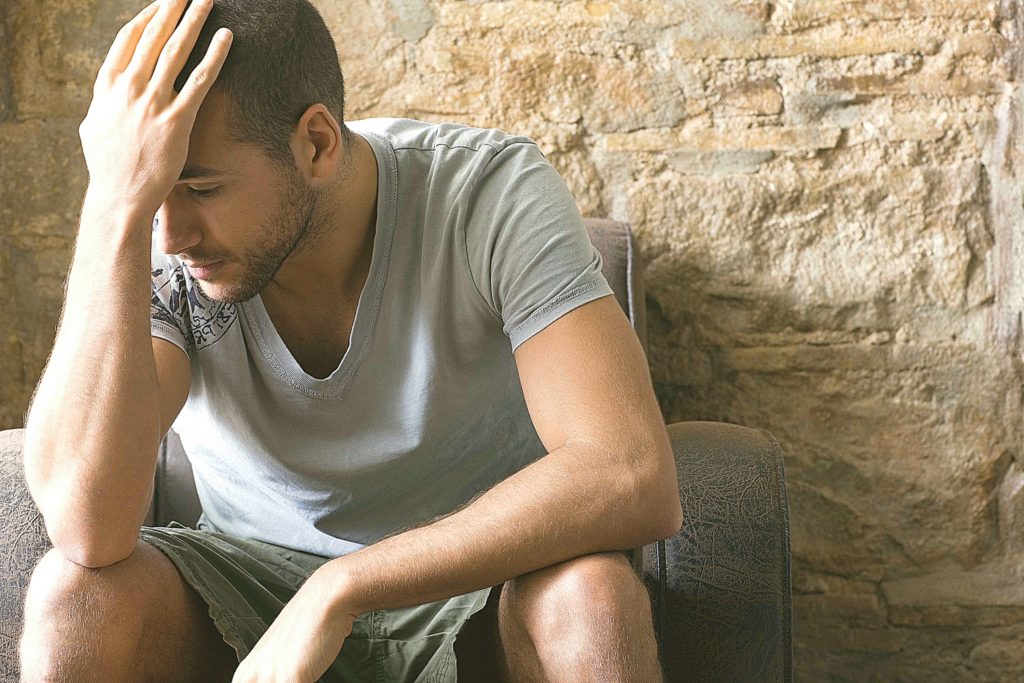The Changing Roles of Parent- An Interview with Dr. Sarah Banchefsky

 In the past, fathers and mothers had strict roles that they played, the mother did the housework and took care of the kids and the farther had to pay the bills. They also had particular roles like mothers were more expressive and fathers more assertive. These roles and traits are viewed to have been changing over time. Mothers and fathers are becoming more similar in their roles. This paper “The “New Father”: Dynamic Stereotypes of Fathers” by Sarah Banchefsky and Bernadette Park looks at the society’s view of how maternal and parental roles and traits have changed over time. Read further to learn more about how people see parental roles as changing over time.
In the past, fathers and mothers had strict roles that they played, the mother did the housework and took care of the kids and the farther had to pay the bills. They also had particular roles like mothers were more expressive and fathers more assertive. These roles and traits are viewed to have been changing over time. Mothers and fathers are becoming more similar in their roles. This paper “The “New Father”: Dynamic Stereotypes of Fathers” by Sarah Banchefsky and Bernadette Park looks at the society’s view of how maternal and parental roles and traits have changed over time. Read further to learn more about how people see parental roles as changing over time.
1.Could you touch a bit on what the research is for our audience who may be learning about it for the first time?
We wanted to investigate whether people view moms and dads as changing over time—both in terms of their “social roles” (basically their behaviors) as well as their characteristics. To do so, we had 425 undergraduates envision moms or dads either in the past (1950), present (2009) or future (2050). First, they first simply wrote their impressions about what this person’s life might be like—for example, what they do on a daily basis and what their personality is like. They then rated how frequently a mom or dad would perform specific parental responsibilities (from never to always), as well as the likelihood that the person would possess various personality traits (from very unlikely to very likely). Half of these parental responsibilities and traits were traditional of mothers (for example, arrange for a babysitter, comfort a child when s/he is upset; intuitive, expressive) and half were traditional of fathers (for example, provide household income, fix things around the house; ambitious, assertive).
We found that moms and dads were viewed as becoming more similar to each other from the past to the present and into the future. Specifically, fathers were viewed as less often doing things such as paying the monthly bills, disciplining the children, and worrying about the financial well-being of the family—traditionally paternal roles—and more often doing things such as doing the laundry, preparing meals for the family, and scheduling doctor and dentist appoints for children—traditionally maternal roles. Mothers showed the opposite pattern, but despite their perceived diminished engagement with traditionally maternal roles, they were actually viewed as retaining the same level of maternal traits over time. Aligning with social role theory, which predicts that a group’s social role shapes the traits the group is seen as having, analyses indicated that perceived role changes for fathers drove perceived trait changes. That is, it is because fathers are viewed as more frequently staying at home with sick children that they are then perceived as increasingly likely to be “considerate” and “helpful.”
 2.Could you talk a bit about how the roles and traits of both parents are changing over time?
2.Could you talk a bit about how the roles and traits of both parents are changing over time?
People expect the roles and traits of moms and dads to shift over time and become less “gendered”. That is, people expect parenting behaviors will be less attached to the mom or the dad and more likely to be taken care of by either parent. We believe that this happens because to some extent, it is true. In the home, the media, and the workplace, the responsibilities, functions, and meaning of fatherhood in the United States are changing. There is much discussion of the “new father”, likely motivated by real change in the behaviors of fathers. In households with two parents, dads now spend more time with their children than at any time for which there are comparable data. Between 1965 and 2003, they have doubled the time invested in housework and childcare, and the number of stay-at-home-fathers has increased almost every decade since the U.S. Census started counting them. Alongside these behavioral changes, dads are expressing greater interest in taking an active and involved role in childcare. A vast majority desire and more are requesting paid paternity leave, and a record number consider being stay-at-home-dads. Simultaneously, more moms are becoming the primary breadwinner in their family.
Although people still expected moms to do “mom things” and dads to do “dad things” in 2050, the gap in gendered tasks or duties was substantially smaller than in the past and today. For example, dads of the future were expected to engage in more behaviors traditionally associated with moms (such as doing the laundry, making meals, staying at home with sick children), and moms were expected to engage in more behaviors traditionally associated with dads (such as paying monthly bills, providing the household income, and disciplining the children). As the behaviors/roles of parents are viewed as shifting, so too do the traits associated with parents. This aligns with Social Role Theory, which posits that social groups are viewed as having the traits or characteristics necessary to succeed in the role they are doing. So, because dads are viewed as more likely to be directly involved in childcare, they are expected to be more nurturing, caring, warm, kind etc. in the future. Meanwhile, moms are viewed as more likely to be more ambitious, assertive, decisive, and independent.
3.What got you interested in doing this research?
I worked with Amanda Diekman as an undergraduate and she (along with Alice Eagly) has similar research showing that gender stereotypes are dynamic—that is, men and women are viewed as changing over time. Specifically, they found that women’s roles and traits were viewed as particularly dynamic because of the fact that women entered the workforce in large numbers between the 1950s and 2000s. Men, who hadn’t experienced as much change in their social role, were expected to stay the same over time. We wondered if one way in which men are viewed as changing, however, is through fatherhood. We had read a lot about the “new and involved father” and thought maybe this is a way in which men can start to redefine masculinity.
 4.How do you think that the changes in the roles and traits of mothers and fathers will affect children?
4.How do you think that the changes in the roles and traits of mothers and fathers will affect children?
I hope that children will be able to spend a more equal amount of time with each of their parents. Modern parents should be able to define their work-parenting roles in a flexible way that suits their careers and preferences. As the roles and traits of parents become less gendered, I expect children and people in general will have weaker gender stereotypes and will be more accepting of “nontraditional” parents, such as working moms and stay at home dads, who take on whatever roles best suits them.
5.What do you think could be done to help with the progress father’s taking on more maternal roles and traits?
Even in the year 2050, people did not envision moms and dads as being the same—although they were seen as more similar to one another than in the past, both were still expected to stick to their traditional parent roles and have the characteristics that coincide with these roles. Nevertheless, people viewed parents as becoming more alike over time, and this was especially due to changes in perceptions of dads. This shifting understanding of fatherhood may empower men to express a softer side, potentially redefining what it means to “be a man”. Research shows that the characteristics most valued in a social group are those that facilitate success in the group’s social role. As the social role of fathers changes to embody more nurturing and caretaking behaviors, so too do the characteristics people most value in fathers broaden to encompass “nurturing”, “sensitive”, and “caring.” Whether a father quits a job to stay at home with his kids, leaves work early to pick up a sick child, or packs his child’s lunch, these behaviors alter people’s beliefs and expectation about fathers and what they are capable of, ultimately changing the definition of what it means to be a father, and perhaps, a man.
However, substantial political change is needed to facilitate dads becoming more involved in childcare. Like moms, dads deserve to have paternity leave and spend time with their newborns. If a mom gets several weeks or months off, and a dad only has one week, this creates an imbalance in initial childcare, practice, and accumulated expertise that can be difficult to recover from. Ideally, I believe the ideal solution is national policies mandating a certain amount of paid time off for both parents to use as they see fit. If workplaces not only offer but incentivize parental leave, this should help dads feel able and comfortable taking paternity leave.
It’s also our hope that by being able to be involved fathers, men in general will be seen differently. Research shows men can suffer from society’s narrow and strict definition of masculinity. Some research calls this “precarious manhood”—it’s the idea that masculinity must be publically proven and demonstrated over and over again. Trying to “be a man” can be mentally and physical taxing, causing men to feel isolated, engage in aggression, and suppress their emotions. We hope that as involved fatherhood becomes more commonplace, normative, and accepted, it will help broaden our understanding of masculinity so that it encompasses being caring, sensitive, and emotionally expressive.
 6.With your research, what do you hope to see from it within the next year or so?
6.With your research, what do you hope to see from it within the next year or so?
Related to this same line of research, we are currently investigating how sharing facts about increasing father involvement in childcare can change perceptions of men. In general, men are viewed much more negatively than women, mothers, and fathers. However, reading about how fathers are becoming more involved in childcare caused men to be viewed more positively and as more similar to fathers, to mothers, and women. I hope our ongoing research shows that the role of the “new dad” will be a socially accepted way for men to get in touch with their more traditionally “feminine” side with positive benefits for them personally, their children and likely society in general.
7.What are some challenges you faced during the times of your research?
As is common in academia, we initially struggled to get this work published. Our first attempt was rejected because they thought the work was not “novel enough.” We waited a long time before attempting again, which I think was a mistake.
8.Do you have additional resources or further readings for those who want to learn more about the topic?
Diekman & Eagly, 2000 for the original paper about dynamic stereotypes.
People view the roles and traits of mothers and fathers being more similar over time. This could be beneficial as then both the parents would be more involved in the raising of the child and the child can form an equal bond with both their parents.




Responses